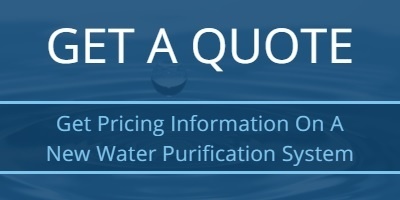
Water is one of the pharmaceutical industry’s most important commodities. It’s used to create excipients, synthesise ingredients, produce finished drugs, and clean equipment. Each phase of production has its own water quality standards, particularly as they relate to microbiological content. The European Pharmacopoeia regulates water purification according to its use, and laws were tightened up in 1999 when global interest groups expressed concerns about the use of reverse osmosis to purify water for injections. Today, water grades are divided into three broad categories: water for injections, purified water, and highly purified water. These don’t include potable water, which is regulated by its own national authorities.

1) Water For Injections
Water used to prepare or dilute injectable medications must be free of bacteria and endotoxins. Distillation is reliable for this purpose, so it’s the most popular method in the industry. It’s critical that purification apparatus be made of quartz, neutral glass, or metal. Aerobic counts need to be carefully monitored, as must conductivity and carbon levels. The entire water distribution loop needs to be drainable, sustaining constant turbulent flow to prevent contamination. Revised guidelines allow a little room for choice, so continuous electro-deionisation, reverse osmosis, and ultrafiltration are options that may help manufacturers to fine-tune their budgets.
2) Purified Water
Medications, including dialysis solutions, must be sterile and apyrogenic. Purified water's regulations leave plenty of scope, with ion exchange and distillation being the most popular methods. Deionisation removes minerals without affecting microbes and other volatile organic substances. In hard water areas, it can prevent corrosion of your equipment, which in turn ensures better water purity over time. Even so, distillation is faster, cheaper, and lighter on utility bills. Today’s ultrafiltration membranes have a smaller pore size than has been possible in the past, so with an extra layer of filtration, it can achieve microbiological purity.
3) Highly Purified Water
Highly purified water can be prepared using double-pass reverse osmosis combined with ultrafiltration or ion exchange. Regulations have been drafted to allow manufacturers to move beyond distillation, but this demands potable water that’s low in endotoxins and is carefully monitored. Combining reverse osmosis and ultrafiltration is far more economical than the upfront costs of distillation.
Water must be more than merely pure, though. Your filtration method must prevent contamination from contact materials while resisting rust and leakage. Its configuration must be fine-tuned, not only to keep water pure, but also provide enough space for your equipment. Purification needs to prevent seasonable variations in feed-water quality, so pre-treatment is usually needed. Sampling points must be built into your system so that you can catch contamination early and prevent expensive product loss.
Find Out More
Updates in regulations have given manufacturers more room to arrive at the ideal purification strategy for their needs and pockets. To find the best solution for your plant, download our free Industrial Water Purification Guide.
Image source: Pixabay









 We are a specialist independent company involved in water purification and water treatment technologies
We are a specialist independent company involved in water purification and water treatment technologies


